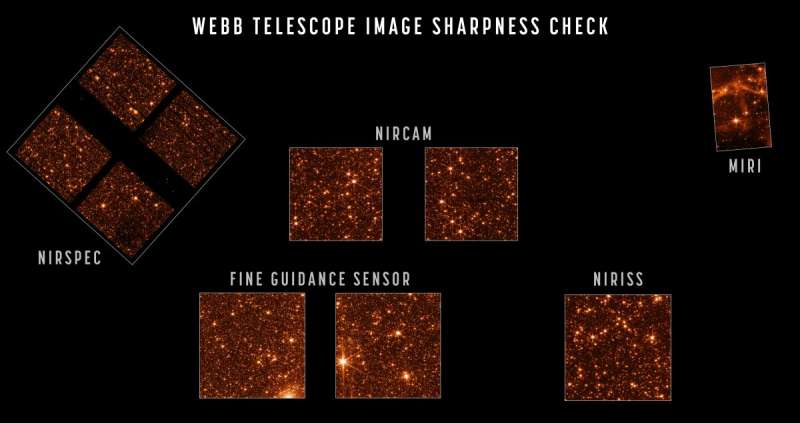
The alignment of NASA's James Webb Space Telescope is complete. The observatory has been found to be capable of capturing crisp, well-focused images with each of its four powerful onboard science instruments. After completing the seventh and final stage of telescope alignment, the team held a set of key decision meetings and unanimously agreed that the next and final series of preparations, known as science instrument commissioning, is ready to begin. The scientific operations will begin in the summer.
A series of images show the alignment of the telescope across all of the instruments at the observatory.
The test images from a successfully aligned telescope demonstrate what people can achieve when there is a bold scientific vision to explore the universe.
The optical performance of the telescope continues to be better than the predictions of the engineering team. Each instrument is successfully capturing images with the light being delivered to them, thanks to the mirrors that are directing fully focused light from space down into each instrument. The image quality delivered to all instruments is limited by the size of the telescope, meaning that the detail that can be seen is as good as possible. From this point forward, there will be no major changes to the mirrors.
With the completion of telescope alignment and half a lifetime of effort, my role on the James Webb Space Telescope mission has come to an end. We are surrounded by a symphony of creation. It is my hope that everyone can see them.
The team will now focus on science instrument commissioning. Each instrument has a highly sophisticated set of detectors that help it perform the science it was designed to achieve. During the instrument commissioning phase, the specialized characteristics of these instruments will be configured and operated in various combinations to confirm their readiness for science. The Mission Operations Center at the Space Telescope Science Institute in Baltimore is where key personnel involved with the commissioning of each instrument have arrived after the formal conclusion of telescope alignment.
As part of scientific instrument commissioning, the telescope will be commanded to point to different areas in the sky where the total amount of solar radiation hitting the observatory will vary to confirm thermal stability when changing targets. Maintenance observations every two days will monitor the mirror alignment, and when needed, apply corrections to keep the mirrors in their aligned locations.
Citation: NASA's Webb telescope is now in full focus, ready for instrument commissioning (2022, April 28) retrieved 28 April 2022 from https://phys.org/news/2022-04-nasa-webb-telescope-full-focus.html This document is subject to copyright. Apart from any fair dealing for the purpose of private study or research, no part may be reproduced without the written permission. The content is provided for information purposes only.